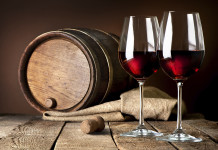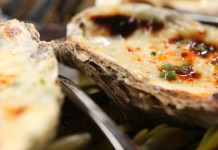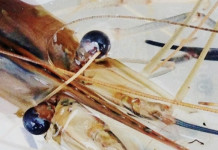Lüchow’s was America’s most renowned German restaurant situated at Irving Place in New York City. The quintessential restaurant served authentic German cuisine along with the finest wines.
During its time, regular patrons comprised famous people including the likes of Theodore Roosevelt. If you wish to know more about the distinct restaurant, check this out.
Lüchow’s History
The restaurant’s establishment occurred in 1882-a time when the adjacent neighborhood was mainly residential.
During its establishment, the founder, August Lüchow, bought the café where he was a waiter and bartender. He purchased the business at age 26 with the aid of a $1500 loan.
Throughout its existence, it became a favorite spot, especially for persons in the entertainment world. The establishment attracted such persons due to its proximity to the city’s opera house, and the Academy of Music.
The sale of the restaurant took place several times. However, it was never the same. To begin with, Union Square wasn’t the center of the theater district and by 1980, empty buildings surrounded the area.
After a century as a gustatory landmark in Manhattan, the opulent restaurant moved to the theater district in 1982.
However, the new location lasted only a few years and in 1995, the demolition of the 14th Street building occurred after a fire incident the previous year.
Lüchow’s Cuisine
The famed restaurant had a German-oriented cuisine throughout its existence. The menu comprised dishes such as Wiener Schnitzel and different wild game.
The perennial staples included red cabbage, beets, and pumpernickel bread. In terms of dessert, some of the favorites included flambéed pancakes.
In 1885, Lüchow’s became the authorized American agent for Wurzburger-fine beer from upper Bavaria. This was the ideal accompaniment to German dishes such as sauerkraut and pig’s knuckles, beefsteak, and potato dumplings. However, the restaurant relaxed the German orientation after 1923 following the founder’s demise.
Service
During its time, the establishment featured trustworthy and knowledgeable waiters. They typically advised patrons on the food. Some patrons such as William Steinway entertained globally renowned musicians at elegant dinners.
Festivals
The restaurant held long-week festivals throughout the year; each festival had its unique traditions. For instance, the Bock Beer festival took place during spring.
During the event, the German band entertained guests and the menu comprised conventional foods of the season. The foods included liver sausage, pig’s knuckles, roast ham and liver dumplings.
Another event was the Goose feast, which took place in December. The event was a gourmet’s delight, featuring appetizers, potato dumplings, and marinated herring.
During the feast, cranberries and stewed apples accompanied the roast goose. The May Wine Festival on the other hand celebrated spring. During this event, grapes and vine leaves draped the restaurant.
Of all traditions, Christmas was perhaps the most cherished. During this event, the place erected a 25-foot tree with 500 electric candles and 19th century German toys.
On this occasion, the diners would sing along as the orchestra played. The restaurant also maintained the same menu on Christmas. The menu comprised oxtail soup, roast goose with chestnut stuffing, boiled carp, pumpernickel, and ice cream.
In conclusion, Luchow’s was no doubt unmatched during its time. Although it’s nonexistent, the restaurant certainly made a lasting impression in the minds of many.
[Image]





